- Getting around Lijiang. Dont stay in the Old Towns more than 2 days, there is nothing to do. KRISS Oct 9, 2013 05:46
- 2013 Beijing Temple Fair BENNYLAU Feb 26, 2013 03:29
- Malaysian traveling from KUL - LAX vis Shanghai PVG ZATI_DY Jan 3, 2013 20:15
Bewitching Badachu
- Views: 3811
- |Vote: 0 0
- |Add to Favorites
- |Recommend to Friends
Bewitching Badachu
It is the autumn months, and as the summer heat gives way to winter’s chill, it’s not just people’s cheeks that glow a rosy red.
Early November is the best time to view the turning of the leaves in northern China, and what better spot than the capital city itself: Beijing.
One of the highlights of living in Beijing is the convenient ability to get out of town. Unique in that it is ringed by mountains, an escape from the bustle of city life is just minutes away. In my hometown of Tianjin, an excursion to revel in natural beauty takes upward of two hours, but here in Beijing one must only descend to the depths of the subway and, several stops later, may emerge cradled by hills.
Colorful hills, at this time of year. Though many Beijingers flock to the Fragrant Hills west of Beijing, one of the lesser-known but equally beautiful spots neighbors this tourist mecca: Badachu Park.
17 Kilometers from Beijing’s city center and south of the Fragrant Hills, Badachu is named after the 8 Buddhist temples, nunneries and a cave that nestle in the embrace of Cuiwei, Pingpo and Lushi Hills. The temples date back to the Sui (581-618) and Tang (618-907) dynasties, but the park itself was restored as a visitor’s destination in the 1980’s. Covering over 250 hectares, the park offers a day of blissfully beautiful respite and relaxation; a chance to convene with nature and escape the crowds that are sniffing their way around the Fragrant Hills.
A Stunning Panorama
Though tourist buses, taxis, and waremongers crowd outside the front gate of the park, the chaos rapidly disperses as trees begin to outnumber tourists. Lace-bark pines and cypresses offer evergreen counterpoint to the gold and scarlet swathes of color from the annuals-in-residence, including willows and the especially striking Gingko trees.
There are several routes to choose from to ascend the hills by foot, but the most exciting is by air. In the 1990’s Badachu park built a chairlift that takes visitors up—and down—the mountain. Though the ratchety screech of the turnstile and the battered-looking condition of the chairs can be nerve-wracking, the ride itself is smooth and comfortable and safe.
But you won’t pay much attention to the chair once you rise above the trees and look out over the whole of the park and the surrounding hills. The eight temples within the park freckle the verdant slopes and the Beijing cityscape unfolds to the horizon. During the clear and cool days of autumn, the sun creates a magnificent quilt of color that can only be fully appreciated from this birds-eye view.
Dabei Temple, Pearl Cave and Gingko Glory
From the top of the chairlift, signs in Chinese and English guide visitors to the Temple of the Fragrant World (Xiangjie Si) and the Pearl Cave. The Pearl Cave sits behind the Xiangjie Temple. It is named for the white stone formations on the cave walls which resemble glittering pearls. Floating candles within the small cave lend an austere and eerie light that put the topography of the cave walls into stark perspective. The Xiangjie Temple, facing east, offers a prime sunrise-viewing spot.
Beyond the Temple of the Fragrant World lies the Dabei (Great Mercy) Temple, whose courtyard boasts twin Gingko trees festooned with red lanterns. Visitors can purchase the mini-lanterns and fasten them to the tree branches, holding their prayers and wishes fast to the limbs of these ancient guardians. In autumn the Gingko leaves glow golden in the sunlight, stunning and memorable against the gray stone and red-painted walls of the temple buildings. One of the buildings in this complex belongs to the fa lun sect of Buddhism, whose sister-sect has become banned in China and famous abroad.
Racing through the Trees
Winding back along the paths to the chairlift summit, visitors can break from the meditative peace of the temples and the forest for a joy-ride down the mountain. In the 1990’s Badachu park built a chute slide, a louge-like vein that winds down the flanks of the hillsides. Individually operated, visitors climb onto the small carriages and slip their way through the trees. It’s a simple device but thrilling—a joystick handle doubles as the accelerator and the brakes, allowing the rider to control the speed at which they descend. At one point the slide breaks out of the cover of trees, crossing a small valley via a trestled bridge, giving sliders a brief but thrilling glimpse of the views and terrain. Signs along the route warn of “nasty” turns, and operators stationed at intervals monitor safety and mime at you to slow down if you’re approaching light-speed in the black-bomber vehicle.
To the Nunnery
Once again at the base of the mountain, selecting the western-most paths will lead visitors to Lingguang Si, the Temple of Divine Light, and the Dragon Spring Nunnery. The temple of Divine Light is most prominent and notable for the green-and-gold pagoda that draws people in, like a lighthouse, to view its beauty.
The Dragon Spring nunnery lies sheltered in a grove of cypress and pine. Its peace, and the lulling tranquility of the Spring pool in the main courtyard, makes it a prime spot to relax and rest one’s feet. Perhaps that is why the nunnery has been converted to a tea-house. Visitors can sit at one of many tables that lie within the nunnery, along terraces or inside the building walls.
The temple of the Dragon King also sits within the nunnery. It is said that the Dragon King came to rest at the nunnery to protect the devout nuns in their worship and lead them to enlightenment. From the temple originates the spring, which then runs gurgling into the pool in the main courtyard.
Enlightened Flight
Just west of the Dragon Spring Nunnery is another of Badachu’s thrilling diversions. A zipline spans the valley of two of Badachu’s hills. Strapped into a harness, those daring enough leap off the edge of a high platform and fly over the valley floor. They arrive, breathless and grinning, on the opposite flank of the hillside, where operators de-strap them and send them on their way, bubbling with excitement from the thrill of flight.
Though Badachu park has its reputation rooted in the centuries-old temples and nunneries, it’s also the perfect place to spend a day getting lost in the warrens of paths and the meditative silence of the forest, or to defy gravity by zipping on the zipline or sailing on the chairlift over the trees. Reputed to defy Beijing weather, it is cool in summer and warm in winter, offering something for everyone at any time of year.
Information
Getting There:
Badachu is 17 km northwest of Beijing’s city center in Shijingshan District
Take the blue line of the subway to its westernmost terminus at Pingguo yuan: 3RMB.
From the subway stop, take a taxi or pedicab to the entrance of Badachu park: 3-10 RMB
Local buses also go from the city to Badachu. Routes 374, 389, 311, 958, 972 or 622
Park Admission: 10 RMB
Chairlift: 30 RMB
Chute Slide: 30 RMB
Zipline: 30 RMB
Entrance to all temples is free with park admission
Operating Hours: 5.00-17.30



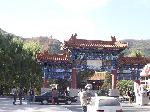
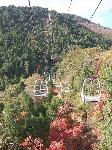
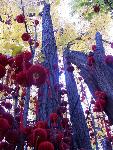
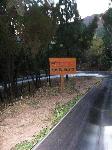
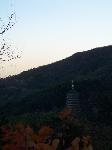

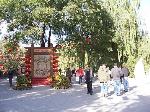
 Copyright © 1998-2025 All rights reserved.
Copyright © 1998-2025 All rights reserved.
1.
May 7, 2007 22:45 Reply
FAISAL said:
Thank you for the expanse related information. Money is always question for traveling.